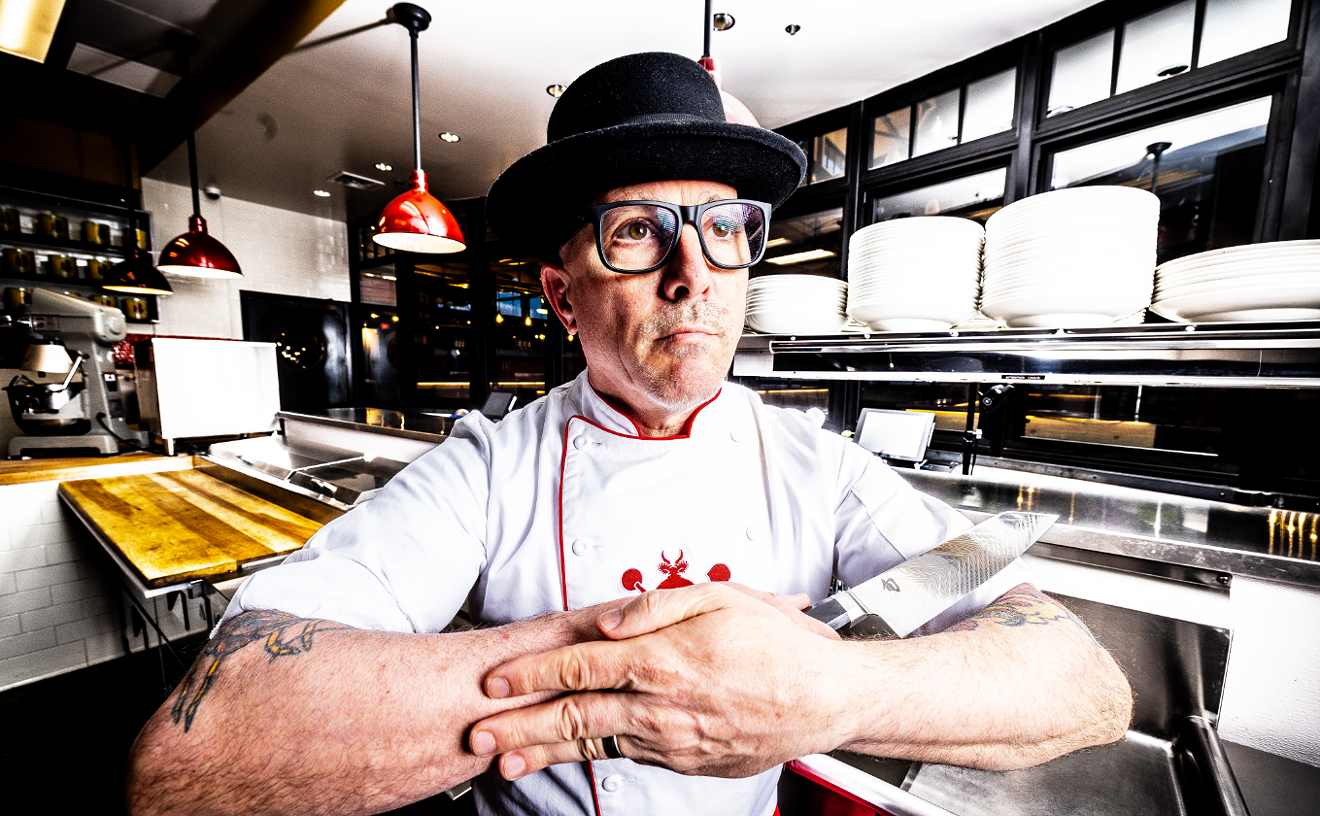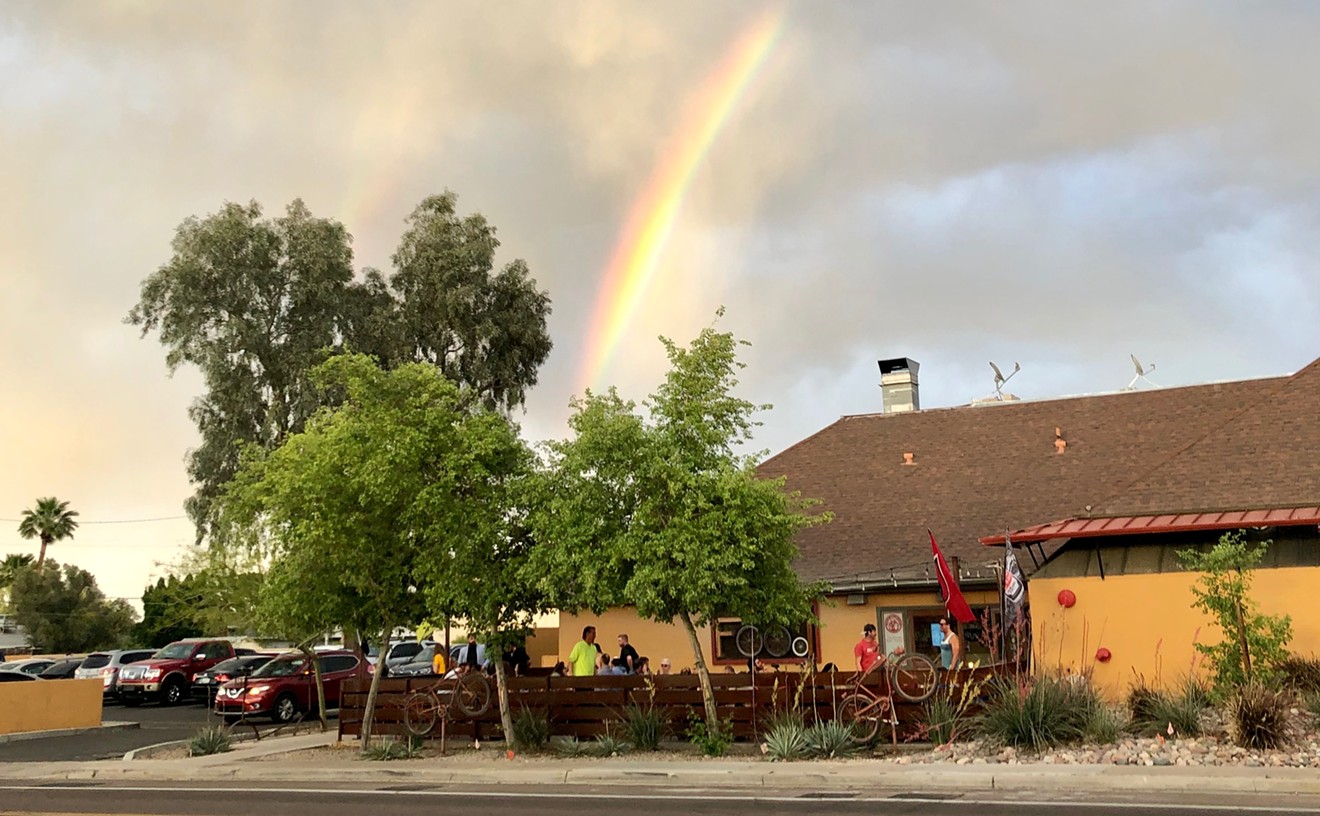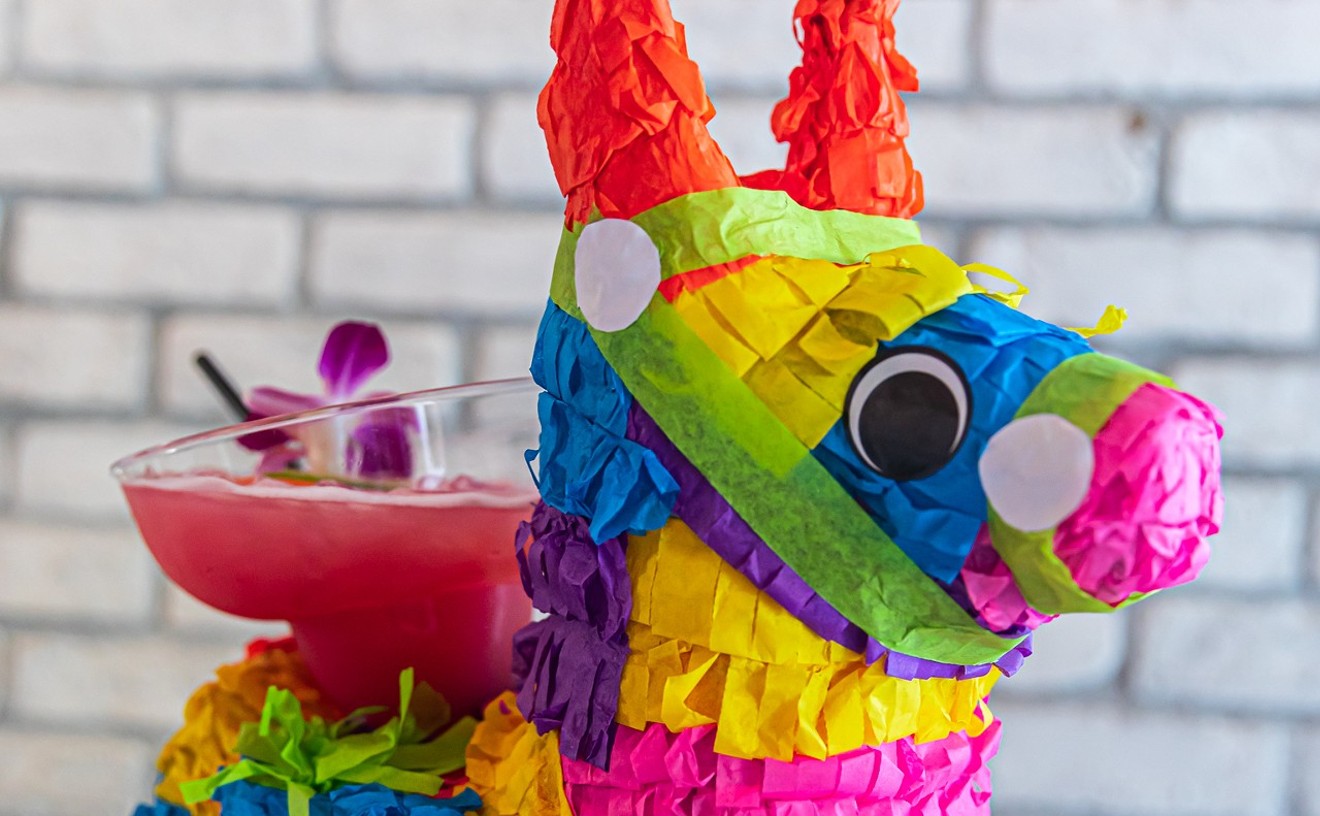Do you ever wonder how that pretty fern finds its way into your specialty coffee? It doesn't just appear there by coincidence. Your barista's probably brushing up on his art skills: Latte art, that is.
From a "glorified latte slinger" at a Starbucks drive-thru to barista to manager to the director of education and training at Cartel Coffee Lab, Jen Macias has learned her way around a cup of joe. Today she shows us step-by-step how to make your latte not only look pretty sweet but also taste really damn good, too.
"Latte art is the really very last stage for a barista, in that the emphasis is really all on the quality of the drink itself - the composition, appropriately steaming milk and appropriately extracting espresso," Macias says. "Essentially what you need is microfoam, and espresso that displays an adequate amount of crema."
Hold up. Quick latte art vocab lesson with Macias:
Get the lesson -- and details about an upcoming competition -- after the jump.
Crema is the foamy part of espresso. It needs to be a "hazelnut brown with a reddish reflection" to provide enough contrast with the milk. You want very little yellow, or "blonding," which attributes bitterness or sourness to the espresso.
Microfoam is the aim when you're steaming milk - "it's really silky, uniform and creamy above all." Baristas who steam milk properly will not only introduce enough air but also create movement to constantly circulate and texturize the milk.
Free pouring is the most traditional form of latte art, in which the barista creates designs with only the stream of steamed milk and the movement of her wrist as she adds the milk to the espresso.
The soft heart is the beginner's latte art design and by pouring right down the middle and finishing with a lift.
A rosetta is the fern design latte artists make by moving their wrist back and forth in a crescent at the end of their pour. Most other designs - swans, tulips, wreaths, phoenix - are a variation on this technique.
More intricate designs can be created if toothpicks and syrups are introduced to the mix, but Macias is more of a coffee purist and opposes altering an already fine product. "You can't add quality to coffee, you can only reveal it."
At Cartel, they use single source coffee and organic whole milk to make the best latte art - both visually and tastily. If extracted and steamed correctly, Macias says, they create the ideal design contrast and flavor balance.
Step 1: Prep your station and pour your milk. The entire process takes about a minute, so you need to be on your game.
Step 2: Dose and tamp your coffee.
Step 3: Pull your espresso. And in the 25-30 seconds it's extracting, steam your milk.
Barista's Note: Espresso can "die" or have comprised flavor within 10 seconds of pulling the shot, so you want to introduce some substance, i.e. milk, as quickly as you can.
Step 4: Pour your design. Tilt the cup so the espresso is angled, giving you a little more depth. Pour the microfoam quickly at first, so it dives down below the crema. Then, slow it down and bring the spout closer to the surface of the crema to layer it and create your design.
The aim is a creative and symmetrical design with high contrast and defined lines without breaking the outer ring of the crema.
Step 5: Drink the latte!
Watch Macias in latte art action!
Macias is adamant about artistic lattes being enjoyed for their taste as well as their aesthetics. She visibly tenses when an espresso is pulled poorly just for the sake of design or when a latte is tossed after one sip in a competition.
"That really pulls at my heartstrings because there is so much energy that is put into procuring that coffee from the farmers that harvest and process it, from the people that source it and bring it to the country, from the person who roasts the coffee, and from the preparer: the barista," Macias says. "We are the last set of hands that touch the coffee, representing all of the energy beforehand. To be merely sipped and discarded seems like a waste of talent and resources."
Want to try your hand at latte art? Get the fundamentals down first. Learn how to extract espresso, steam milk, and mix a latte. Then practice, practice, practice.
"Experience and observation is the best way to train for latte art," Macias says. "It's very instinctual, kind of like painters. You can teach painters technique, but their signature and the beauty of their art is really independent to them."
Want to catch some latte (performance) art? Check out the Latte Art Throwdown at Phoenix Cooks Sept. 4 from 9 a.m. to 3 p.m. when 16 baristas compete head-to-head.










